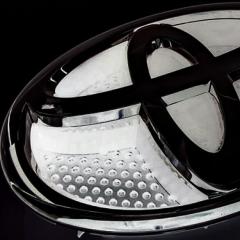Since the 1980's tyres have had a date stamp added to the side walls so that you can see how old they are.
During the 80's it was a 3 digit code giving the week number and year of manufacture. So 218 would equal week 21 in 1988, when we got to the 90's to differentiate they added a triangle to the 3 digits, so 218 (followed by a triangle) would represent week 21 in 1998. It became easier to remember from the year 2000 when a four digit code was used, so 2108 would represent week 21 in 2008.
The service life of a tyre is usually measured by the amount of tread remaining; in the UK the legal limit is 1.6mm over ¾ of the tread all around the circumference. But we should also be looking at the date code as oxidisation is also a serious concern, and since tyres are made of rubber they degrade with age.
Most consumers in the UK do not know that the date code exists, a survey in 2006 showed that only 4% of drivers realised that tyres becomes more dangerous as they age. A large body of scientific evidence supports, that most tyres should be replaced six years from the date they were manufactured. This six year expiration date begins from the day the tyre was made, not from the day it was sold and fitted to a vehicle.
Tyres age dangerously because a chemical process commonly referred to as oxidisation occurs, this simply means that a tyres components are exposed to oxygen, the oxygen particles cause the flexible components of the tyre to harden and become brittle. Over time, the tyre will fall apart under normal stress, just like an old rubber band. Because this process occurs naturally, it doesn't matter if a tyre is being used, stored as a spare, or waiting on a shelf in a tyre depot, the breakdown process has started from day one.
How old is too old? This is a subject of much debate within the tyre industry and no tyre expert can tell exactly how long a tyre will last. The results of experience of many tyre manufacturing companies including Bridgestone, warrant their tyres for 5 years from date of manufacture. Based on these understandings many vehicle manufacturers are now advising their customers to replace their tyres after 6 years, regardless of tread depth remaining.
